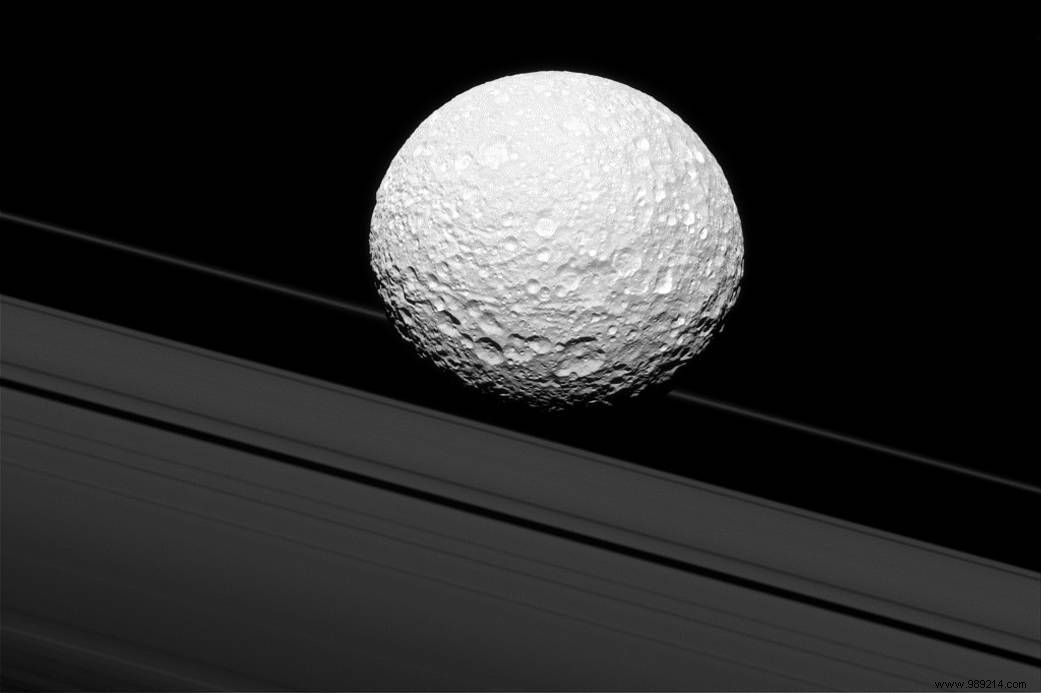Based on recent analysis backed by data from Cassini, Mimas, often compared to the universe's "Death Star" Star Wars, would house an underground ocean. Finally, the Solar System is therefore an even more soggy place than we thought.
The icy moons of Saturn and Jupiter have attracted a lot of attention from scientists in recent years. Enceladus and Europa in particular are considered prime locations for the search for extraterrestrial life. Driven by the stretching and pulling of the tides caused by gravitational interactions with their planets, the deep geological activity of these two bodies indeed generates enough heat to prevent water from freezing under their icy shells> .
However, Mimas, immediately recognized by its famous Herschel crater 130 km in diameter, did not appear to belong to this group of moons. Closer to Saturn and evolving in a more eccentric orbit, this small object should experience stronger tides. However, its geological activity remains much lower than that of Enceladus. This finding suggested that Mimas was probably just a block of ice, and therefore less prone to deformation. However, we were wrong.
In a study, Alyssa Rhoden and her team at the Southwest Research Institute (SwRI) investigated tiny oscillations (or librations) detected in the orbit of the moon by the Cassini probe. However, if Mimas is indeed just a scoop of ice, such oscillations should not have been detected . This activity suggested that Mimas either had a differentiated core or a liquid ocean preventing the core from being rigidly connected to the surface, allowing the latter to move. In this work, the researchers focused on the second option.
The purpose of this study then was to find out if the moon would generate and dissipate enough heat from the depths to keep this in liquid form, while maintaining a very frozen outer shell. thick.

To find out, the researchers entered the data available on the moon in digital models and observed the result. Finally, these analyzes confirm that Mimas can indeed harbor an underground ocean able to explain the librations spotted in the Cassini data.
According to their models, the Mimas ice shell under which a global ocean swirls is between 24 and 31 kilometers thick . Since the moon is only 396 kilometers in diameter, this ocean appears very thick. The researchers remain cautious, however, stating that further research will be needed to confirm this.